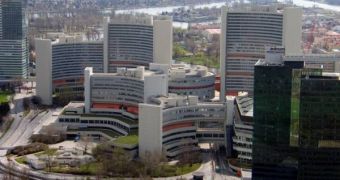According to the UN nuclear watchdog, the International Atomic Energy Agency (IAEA), traces of undeclared and illegal man-made uranium have been found in a small teaching reactor in Damascus, Syria. This is the second time when off-the-books uranium is found in the Middle Eastern nation, with previous traces identified at the al-Kibar site. The latter location was destroyed by an Israeli strike back in 2007, and the United States now claim that it was a nuclear facility, the BBC News reports. Authorities in Damascus are vehemently denying the allegations.
In 2007, inspectors from the agency who were investigating the al-Kibar site discovered traces of man-made uranium of a type that was not on any of the lists that Syrian authorities submitted to the United Nations for review and approval, which basically means that Syria has been operating outside UN jurisdiction. Also suspected of breaching international anti-nuclear proliferation laws are authorities from Tehran, in Iran. They are believed to run a uranium-enrichment program of their own, with the express purpose of obtaining nuclear weapons.
At this point, experts from IAEA are unsure whether a connection exists between the sets of uranium traces found at the two locations, but the possibility has not yet been ruled out. Investigating the matter is very difficult, on account of the stance that authorities in Iran and Syria have on UN inspectors. Countries in the Security Council have urged more cooperation on the part of the two nations, which made it clear that they felt threatened by the American presence in the region. Iran has US troops at its Afghan borders, and says it would stop at nothing to protect its sovereignty.
David Albright, an expert at the Washington-based think-tank Institute for Science and International Security, says that recent estimates show that more than 5,000 centrifuges are operated at this point in Iran, of the 7,000 available. These machines are used to boost regular uranium to low-enriched uranium (LEU). The IAEA estimates that the country now has about 1,300 kilograms of the stuff, which can be used to create enough high-enriched uranium to create a single atomic bomb.

 14 DAY TRIAL //
14 DAY TRIAL //